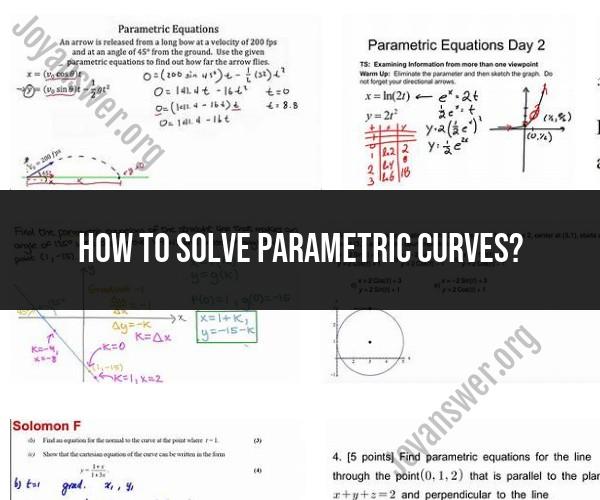How to solve parametric curves?
Solving parametric curves involves understanding the equations that describe the curve and using various mathematical techniques to analyze and work with these equations. Parametric curves are defined by a set of parametric equations, typically in the form of and , where is a parameter that varies over a certain range. Here's a comprehensive approach to solving parametric curves:
Define the Parametric Equations: Begin by understanding the parametric equations that define the curve. Identify the functions and and the parameter .
Parameter Range: Determine the range of values for the parameter that is relevant to the problem or the curve you're interested in. This range defines the portion of the curve you want to analyze.
Plot the Curve: Plotting the parametric curve is often a helpful first step. Choose a range of values within the specified parameter range and calculate corresponding and values. Plot these points on a graph to visualize the curve's shape and behavior.
Derivatives and Tangent Lines:
- Calculate the derivatives and . These derivatives represent the rates of change of and with respect to .
- The tangent vector to the curve at a specific point is given by
Velocity and Speed: If the parametric curve represents the motion of an object, you can interpret and as the object's horizontal and vertical velocities, respectively. The magnitude of the velocity vector gives the speed.
Parametric Elimination:
- Sometimes it's useful to eliminate the parameter to express the curve in a Cartesian form, . This can be achieved by solving for in one of the parametric equations and substituting it into the other.
Symmetry and Special Points:
- Analyze symmetry properties of the curve. For instance, if the parametric equations are symmetric with respect to , the curve may exhibit symmetry with respect to the -axis, -axis, or origin.
- Find special points on the curve, such as points where or , which correspond to extrema or inflection points.
Arc Length:
- Calculate the arc length of the parametric curve over a specified interval using the arc length formula. This involves integrating with respect to .
Area Enclosed by the Curve:
- If the parametric curve encloses an area, use the formula for the area between curves to calculate the enclosed area.
Parametric Equations for Common Curves:
- Familiarize yourself with the parametric equations for common curves like circles, ellipses, and parametric equations for functions like .
Advanced Techniques:
- In some cases, solving parametric curves may involve more advanced techniques, such as parametric differentiation, polar coordinates, or numerical methods for complex curves.
Technology: Consider using graphing calculators, graphing software, or computer algebra systems to perform calculations and visualize parametric curves.
Remember that solving parametric curves can vary significantly based on the specific equations and goals of your analysis. It's important to adapt your approach based on the characteristics of the curve and the specific problems you encounter.











